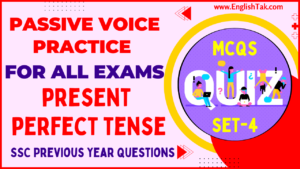![]()
MUST Vs HAVE TO DIFFERENCE
MUST Vs HAVE TO Difference:- “Must” is a modal auxiliary verb, while “have to” is a simple auxiliary verb that functions like a modal verb, despite not being one. These two verbs are being discussed together due to their similar purposes. The goal of this article is to guide you in effectively understanding the differences between “MUST” and “HAVE TO“, and in learning how to use them appropriately.
In English, “must” and “have to” are both modal verbs used to express necessity or obligation, but there are some differences in their usage:
MUST Vs HAVE TO Difference
1. Degree of necessity:
- “Must” implies a higher level of necessity than “have to”. It suggests that something is essential or very important.
- “Have to” implies a lower level of necessity, or that there is an external obligation or requirement that needs to be fulfilled.
2. Formality:
- “Must” is more formal than “have to”. It is often used in more formal contexts such as legal or academic writing.
- “Have to” is less formal and is more commonly used in everyday speech and writing.
3. Usage:
MUST: – “Must” is used to express personal obligations or requirements, or to indicate strong suggestions or recommendations. Must indicates the speaker’s emotions or personal conviction.
For example:-
I must finish this report by tomorrow.
You must see a doctor if your symptoms persist.
HAVE TO: – “Have to” is used to express external obligations or requirements, or to indicate situations that cannot be avoided. Have to” primarily conveys an objective notion or external requirement.
For example: –
I have to attend a meeting tomorrow.
Students have to wear uniforms at this school.
TABLE:
Difference Between MUST & HAVE TO
To better understand the difference between “must” and “have to“, let’s have a look at the table below:
| MUST | HAVE | |
| FORMS | MUST + V1 | HAVE / HAS TO + V1 |
| MEANING | Strong obligation or necessity | Obligation or Necessity |
| USES | Required by Law or Rule, Personal Obligation or Moral Duty | Required by circumstance or situation; preference or desire |
Conclusion:
MUST Vs HAVE TO Difference
Overall, both “Must” and “Have to” are used to indicate some level of necessity or obligation, but “Must” suggests a stronger sense of obligation than “Have to“.
The most effective approach to remember the difference between these two modal verbs is to use “Must” when there’s a personal conviction that something is necessary to do, and we use “Have to” when there’s an external obligation to do something. Moreover, while “Must” remains the same in all three tenses, “Have to” changes to “Had to” in the past tense and “Will have to” in the future tense.
हिंदी में समझे: – इन दो Modal Verbs के बीच अंतर को याद रखने का सबसे प्रभावी तरीका “Must” का उपयोग करना है, जब व्यक्तिगत दृढ़ विश्वास होता है कि कुछ करना आवश्यक है अर्थात जब Speaker सोचता है की कुछ करना जरुरी है। जब कुछ करने के लिए बाहरी दायित्व या कोई बाहरी लोग स्पीकर को मजबूर करता है, तो हम “Have to” का उपयोग करते हैं।
English Grammar in Hindi
Parts of a Sentence in English
Common Adjectives with Letter E
SSC CGL Previous Year Cloze Test





